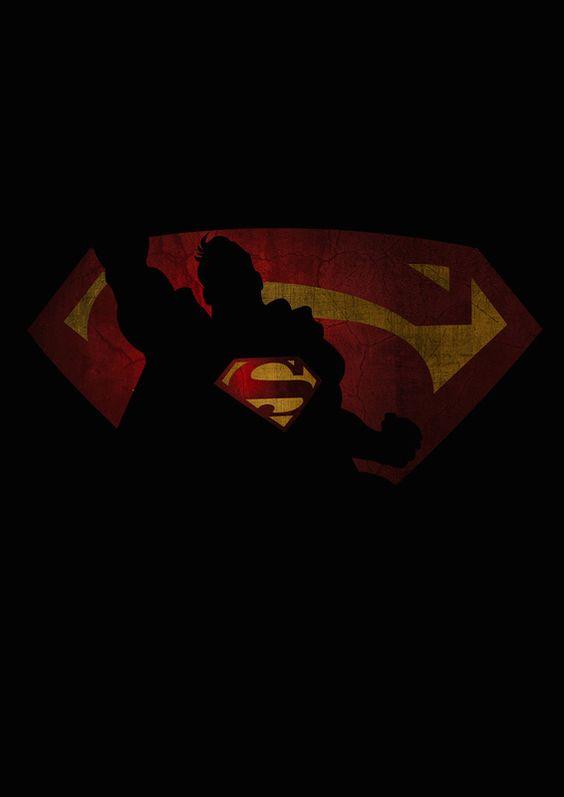The Men Before Superman
FTC Statement: Reviewers are frequently provided by the publisher/production company with a copy of the material being reviewed.The opinions published are solely those of the respective reviewers and may not reflect the opinions of CriticalBlast.com or its management.
As an Amazon Associate, we earn from qualifying purchases. (This is a legal requirement, as apparently some sites advertise for Amazon for free. Yes, that's sarcasm.)

Or was he?
There are few science fiction aficionados not familiar with Lester Dent's creation, Doc Savage. When comparing Savage and Superman, it doesn't require much of a stretch to see the resemblances between "The Man Of Bronze" and "The Man Of Steel". Both had keen minds. Both were named Clark. Both had a "fortress of solitude" -- Savage's in the Arctic, Superman's in the Antarctic. Dent's Savage was even publicized as "a superman" in the house ads promoting the tales. Published in the early-to-mid 1930's, it is readily admitted that Doc Savage was a strong influence on the teenage Siegel and Shuster when they created the Last Son of Krypton.
There was, however, another champion to contend with, an older one who was a lot closer to being Superman than Clark Savage ever was.
 Meet Hugo Danner. He can leap 40 feet into the air; bend steel in his bare hands. Nothing short of a bursting shell can penetrate his invulnerable skin. Sound familiar?
Meet Hugo Danner. He can leap 40 feet into the air; bend steel in his bare hands. Nothing short of a bursting shell can penetrate his invulnerable skin. Sound familiar?
Danner was the protagonist of Philip Wylie's science fiction novel, Gladiator. The product of a super-soldier serum developed by his father, Abednego Danner, Hugo stood alone in a world of "normal" human beings, a victim of abilities and appetites that exceeded those of his so-called peers. Women flocked to him, men feared him.
There were, to be sure, certain differences between Hugo Danner and Kal-L of Krypton. For one, Danner never had qualms about taking a life in battle. He also never felt compelled to disguise himself behind a flashy costume.
Wylie's Gladiator was published in 1930, predating the 1933 debut of Doc Savage and the 1938 unveiling of Superman in Action Comics #1.
So it would seem that it was Philip Wylie who invented the superhero, and not Siegel and Shuster. But if either Dent or Wylie had intentions on patenting the concept of the superhero, they'd quickly find that it was neither of them. Somebody had already been there, nearly twenty years before.
"My effort... carried me fully thirty feet into the air and landed me a hundred feet from my pursuers and on the opposite side of the enclosure."
 With these words, Edgar Rice Burroughs (writing as Norman Bean in 1912 for All-Story Magazine) described the first of several superhuman feats that his character, John Carter, would perform in his serialized novella, A Princess Of Mars. A character even more like Kal-L than Wylie's Gladiator, John Carter was a gentleman of Virginia who found himself the only one of his kind on an alien planet, upon which he soon discovered he possessed powers and abilities far beyond those of mortal Martians. The reason?
With these words, Edgar Rice Burroughs (writing as Norman Bean in 1912 for All-Story Magazine) described the first of several superhuman feats that his character, John Carter, would perform in his serialized novella, A Princess Of Mars. A character even more like Kal-L than Wylie's Gladiator, John Carter was a gentleman of Virginia who found himself the only one of his kind on an alien planet, upon which he soon discovered he possessed powers and abilities far beyond those of mortal Martians. The reason?
"While the Martians are immense, their bones are very large and they are muscled only in proportion to the gravitation which they must overcome. The result is that they are infinitely less agile and less powerful, in proportion to their weight, than an Earth man, and I doubt that were one of them suddenly to be transported to Earth he could lift his own weight from the ground; in fact, I am convinced that he could not do so."
 John Carter would go on to star in nine more Martian novels, thrilling readers with his bravery, his daring, and his ability to unite warring races through his philosophy of fighting when he was forced to, but otherwise treating people and creatures with dignity, love and respect--concepts foreign to many of the Martian tribes.
John Carter would go on to star in nine more Martian novels, thrilling readers with his bravery, his daring, and his ability to unite warring races through his philosophy of fighting when he was forced to, but otherwise treating people and creatures with dignity, love and respect--concepts foreign to many of the Martian tribes.
Of course, the concept of the superman is even older than that. The philosopher Friedrich Nietzsche coined the word "superman" (or overman, depending on the translation) in his work, Thus Spoke Zarathustra back around 1884. Unlike the heroes previously mentioned, however, Nietzsche's "superman" would be a creature of complete selfishness, finding ascension to the status of man-god by abhorring the ways of altruism and embracing insatiable lusts for power as a motivation for rising above, and over, humanity.
We could, of course, explore the superman archetype further, bringing up such distinctly American icons as Paul Bunyan and John Henry. Further literary archeology would land us in the antiquity of Greco-Roman mythology and the tales of Hercules, or in Judeo-Christianity and the story of Samson and Delilah.
Of particular interest to our expedition would be the tale of Gilgamesh, a man who possessed so much strength and power as to be utterly alone in the world, without peer, until one day he finds a brother who can match him. Tragically, Gilgamesh loses his brother prematurely -- a tale that would echo down through the millennia, to be repeated again in the Superman mythos in the tale of Superboy and Mon-El.
Ironically, it was Dell, Gold Key, Marvel Comics--DC's competitors--that succeeded in bringing these Superman forerunners into the four-color realm of comic books: Doc Savage and John Carter both had an ongoing series, while Hugo Danner was featured in an issue of Marvel Preview #9 under the title "Man-God."

DC eventually managed to get their hands on Doc Savage for a while, but the series lacked a certain je ne sais quoi, and the series was cancelled after twenty-four issues. They also wedged Hugo Danner into the DC Universe, making him the absentee father of the Young All-Stars strongman, "Iron" Munro (in Roy and Dann Thomas's liberal adaptation of Wylie's novel in Young All-Stars #10-11).
So, one might say that the Man of Tomorrow is really just the Man of Yesterday, in a shiny new package, a modern retelling of the tales inspired by the countless authors of the past.
One might.
But that would only examine one side of the equation. For inside Jerry and Joe's spandex clad mystery man, existed a unique atom of creativity, an atom that, once exposed, rapidly split, and continued splitting, spawning superman after superman -- each inexorably linked to the Kryptonian, yet each uniquely different.
And one day, who knows? Perhaps there will come a new generation, with a new superman, and readers and scholars alike might discuss how that character is but an extension of all the ancient archetypes of Gilgamesh, of Hercules, of John Carter, Hugo Danner, and Doc Savage.
And of Superman.


